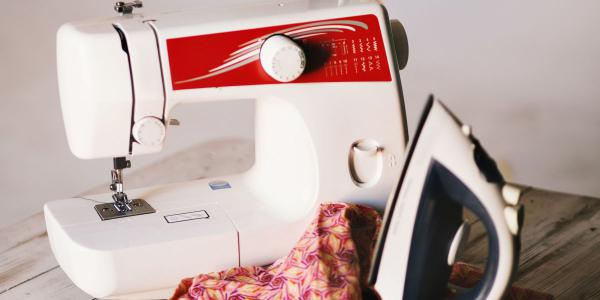The thighs of your jeans are frayed and starting to split. Your pants are uncomfortably snug, and your shirts are so big you’re practically swimming in them. Your favorite shoes are scuffed, the buttons on your blouses are dangling. Bottom line? Everything looks worn down.
It’s tempting to grab a garbage bag and to start stuffing every garment into it, but these items are salvageable. Instead of cleaning out your closet, learn some do-it-yourself tricks to help your clothes last.

Mending worn out thighs:
The inner thighs of your jeans have chafed after months of hurrying to and for, and the denim’s full of holes and tears. To keep your outfit functional and appropriate, you can mend jean thighs by gluing a scrap of stretch denim to the insides of the leg and stitching over it with a sewing machine.
Expanding a waistline:
Before you consider running to the mall for a new pair that doesn’t dig into your hips, see if you can make it bigger by letting out the waistline. Follow an online tutorial for the simple clothing alteration to see how to cut the back-center seam, cut an insertion piece, and sew it into the jeans.
Shrinking a shirt:
Maybe you lost weight, or maybe you misread a website’s sizing chart — whatever the reason, you don’t want to deal with a baggy shirt that hangs off your frame. There are online tutorials to help you take in a shirt by trimming down the sleeves and excess fabric, then sewing it back together.
You can also quickly shrink a cotton shirt by running it in the washing machine with hot water and then tumbling it in the dryer on high. For only a little bit of shrinkage, skip the dryer and hang up the t-shirt on a clothesline.
Fixing scuffed shoes:
High heels, boots, and flats can cost you a pretty penny, so you will want to learn some DIY shoe repair tricks to make them last more than a season. When the scuff marks are on black leather, use a black permanent marker to color them in.
You can remove scuff marks on white shoes by smearing whitening toothpaste over the area and scrubbing it with an old toothbrush. The surface should look good as new when you wipe the residue away with a damp cloth.

Sewing buttons:
A lot of blouses will come with additional buttons that you can use as replacements when one pops off. If you don’t have extras, go to a craft store to find a button that matches the rest.
Once you have the replacement, don’t outsource the stitch-job to the dry cleaners. Anyone can sew on a button by grabbing a sewing needle and a length of thread and following simple instructions to attach it to the garment.
Why should you care?
Throwing away your pile of clothes every time you spot imperfections is not just a waste of fabric, it’s a waste of money. Constantly refilling your closet will eat away at your bank account, even when you’re getting pieces from the bargain bin.
If your clothes can’t be fixed with DIY and you need to buy more, be sure to read this guide on how you can build up a fashionable wardrobe while staying within the limits of your budget. The guide covers a lot of techniques to help you get the most bang for your buck, like:
- Using mobile apps to get high-quality second-hand garments
- Splurging on fundamental pieces
- Shopping in moderation
The guide is written by the folks at MoneyKey, a lender that offers online loans to people who need to make payments in a hurry. The loan application process is much less stressful than ones offered by traditional banks. People who need to pay off a bill or deal with an essential repair right away can turn to the website for immediate assistance.
Online advances like installment loans or payday loans should only be used for emergencies and never for activities like shopping. An online lender should give sound budgeting advice to complement their cash loans, so people can learn how to prepare their finances in times of need.
Savings from clothes and shoes can always bulk up a household’s emergency fund, helping you take on unexpected bills without help. Missing buttons, fabric tears and black scuff marks should no longer be signs to throw your stuff in the garbage. Your new DIY skills can help you extend the shelf-life of all your garments, so you don’t have to buy replacements. In the end, you’ll be happier with your wardrobe and with your bank account.







